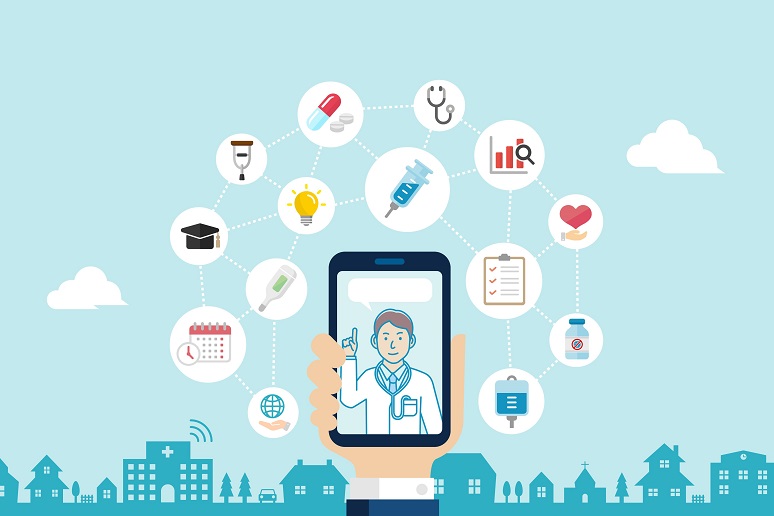As COVID-19 moves closer to becoming endemic, telehealth service providers are tackling staffing challenges as telehealth patient demand normalizes and the industry continues to mature.
Some of those challenges – including worker burnout and skills gaps – are felt across many economic sectors. But the telemedicine industry faced additional challenges due to the especially acute demand placed on its services as soon as the pandemic began.
“Telemedicine had an opportunity to shine during the pandemic,” said Eric Bacon, president of
AMD Global Telemedicine. To meet that initial need, and maintain and grow services going forward, telehealth providers ramped up their work training healthcare professionals on their systems, which addressed staffing challenges by expanding access to telemedicine options and building knowledge and capacity on the tech in healthcare facilities. This response to the challenges presented by COVID-19 puts telehealth providers in the unique position of both needing to overcome its own staffing pressures and pitch their services as a potential solution for the healthcare sector.
A “firehose” of demand
Telehealth is not new – for example, AMD has been in the space since 1991 and has telemedicine deployments in 106 countries, Bacon said.
“It’s new for a lot of people, but for us, it’s old hat,” he said. “But COVID changed things,” setting off a situation he referred to as “drinking telemedicine by the firehose.”
The adoption of telehealth services expanded worldwide over the past three decades, with some form of telemedicine now used in
more than 60% of U.S. healthcare systems. But demand spiked dramatically at the beginning of the pandemic. Telemedicine usage peaked at 291 million minutes in the United States in April 2020, according to a
study published in the
International Journal of Medical Research, and stabilized at 200-220 million minutes from May to November 2020.
That level of demand on healthcare workers – and the burnout they’re experiencing – is a key consideration for telehealth providers. About one in three physicians is
experiencing burnout at any given time, a 2020 study found, and the U.S. Surgeon General considers
addressing healthcare worker burnout a key priority.
Therefore, when it comes to incorporating those services, it’s important to consider not just how the technology works, but how the employees and systems using it work, Bacon said – what their workflow is.
“Are we asking them to do something that just doesn’t make sense to them,” he asked, “because it’s five steps down a different path?” It’s vital for telemedicine providers to think about workflow from the beginning of implementation in order to optimize workflow, which will drive better adoption by staff.
Lessons Learned in Flattening Staff Learning Curves
For
Intermountain Healthcare, training staff was an important part of the work done to meet demand, said Brian Wayling, the company’s executive director of telehealth services. Specifically, Intermountain hospitals needed to get a lot of employees unfamiliar with their telehealth services and platform up to speed – quickly.
Dealing with the human resources (HR) and staffing demands around expanding their telehealth services in response to the pandemic was where things really began to take off to improve care access for patients, Wayling said. “But it also is a big lift for caregivers,” he acknowledged.
For better or for worse, patients and caregivers were often in the position of overcoming the telehealth learning curve together, Wayling said. “It, to a certain extent, was frustrating,” he acknowledged. “You get on the phone, you want to talk to a doctor, and they’re trying to figure it out at the same time you are – it’s not fun for anybody.”
The mobility of the healthcare workforce, and the nursing workforce in particular, is another ongoing staffing challenge, Bacon said.
Turnover rates increased for several healthcare professions after the pandemic began, a study published in the Journal of the American Medical Association found. And a McKinsey report published in May 2022 found the U.S. could face a
shortage of up to 450,000 nurses by 2025.
The high turnover rate can also threaten business continuity. When staff trained to use a telehealth application or system leave their position, it can mean the end of that program at a particular facility. “You have to have the appropriate training and support from the administrative staff to push down to the team, to empower them to be comfortable to use it,” Bacon said of ensuring a telehealth solution’s success.
Going forward, Wayling sees telehealth services as a way to counteract staffing shortages in healthcare fields. He gave the example of Intermountain’s nurse line, which allows newer nursing staff to connect with more experienced nurses for mentorship or knowledge transfer.
“We can guide them, through either voice or video, through these care models and on what might be the best options for them to consider,” Wayling said. The ability to work for a telehealth service like this could be an attractive option for healthcare professionals like nurses who want to continue to work, or are considering a phased retirement, but no longer want to be tied to one physical location or feel able to handle the physical demands of a traditional nursing position.
Telehealth Education and Technology Training Are the Future of Telemedicine
Going forward, the ongoing transformation of medical care is the challenge facing the healthcare industry, Wayling said. For many medical professionals, their training was largely physical. “Now you’re asking them to provide care safely and appropriately, but through digital means,” he said. Incorporating telehealth education into training programs for doctors, nurses, and other healthcare providers is an important part of maintaining and building on that satisfaction and efficacy, he said.
Those flexibilities, in combination with telemedicine technologies, could be part of the long-term solution to meeting staffing needs and patient demand while reducing provider burnout.
“We’re not trying to increase the workload. We’re at workload,” Bacon said of telehealth solutions. “We’re trying to reduce it – again, driving better adoption.”




